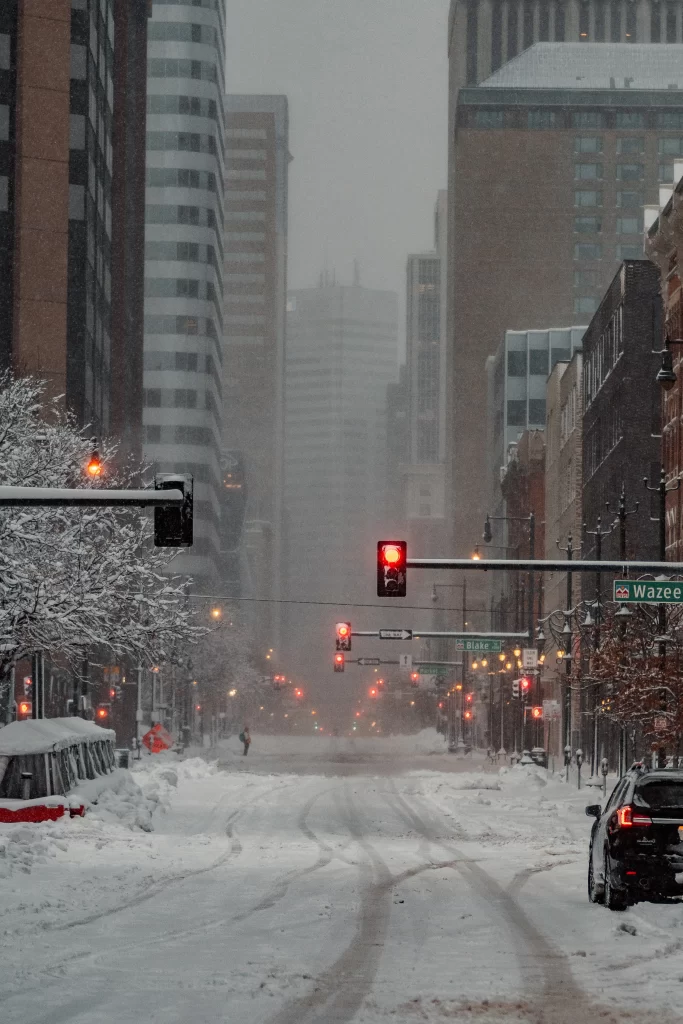When the snow starts falling and the wind begins to howl, there’s no telling what Mother Nature has in store. While we can’t predict the future, we can make ourselves as prepared as possible for whatever comes our way. During the winter months, you should always be ready for a snowstorm. Whether it’s a harmless flurry or an extended period of sub-zero temperatures, you never know when a winter storm might hit. If you live in an area with a risk of snowstorms or other adverse weather conditions, it’s important to remain prepared at all times. With that in mind, here are seven tips to help you survive a winter storm…
Have an emergency kit ready to go
If you’ve ever been through a winter storm, then you know how quickly things can turn from bad to worse. You may lose power, or your neighborhood may become impassable if there’s too much snow on the ground. You may have to drive to work in hazardous conditions, or you may have to stay at home if public transportation is canceled. In any of these situations, having an emergency kit on hand can make all the difference. An emergency kit should contain a variety of items that can help you stay safe and comfortable during an extended period of inclement weather. At the bare minimum, your kit should contain food and water, a first aid kit, warm clothes, a flashlight, batteries, a battery-operated radio, and a supply of cash. Ideally, you should keep two kits in your home: one in your car and one in your home.
Stay in touch with loved ones
If you live alone, or if you have elderly neighbors whom you fear may struggle to get around in bad weather, one of the most important things you can do during a winter storm is stay in touch with loved ones. You can do this by making sure you have an extra phone charger on hand. You can also make phone calls using a phone app that doesn’t require a connection to a network. Additionally, you can email or use a messaging app like Facebook Messenger or WhatsApp to stay in touch with friends and family members. Finally, you can use a social media platform like Facebook to check in with loved ones and let them know you’re safe.
Check on elderly neighbors
If you have elderly neighbors who may be particularly at risk during a winter storm, you may want to check in on them during the worst of the weather. If you can’t drive due to the weather conditions, you can still communicate with your neighbors by posting a friendly note on their door. You can also ask them if they need help or supplies, like food and water, if they’re unable to leave their house due to the storm.
Don’t forget the basics: Food and water
One of the most important things you can do to prepare for a winter storm is to make sure you have plenty of food and water on hand. If the power goes out and you’re stuck indoors without electricity, you may need to rely on a stockpile of canned food and bottled water. Make sure you keep these items on hand at all times, particularly if you live in a high-risk area. If you have an extended period of sub-zero temperatures and blizzard-like conditions, it’s best to stay indoors. While it may seem tempting to brave the elements, you can’t be sure when the weather will improve. Rather than risk getting stranded or injured, it’s best to stay indoors, away from the cold.
Be careful on the road
Even if you live in an area that’s not prone to blizzards or extended periods of sub-zero temperatures, you still need to be careful on the road, particularly during a snowstorm. This is particularly important if you have to drive to work or school during inclement weather. While you can’t control the weather, you can control your driving habits. Make sure to drive slowly, keep your car’s tires properly inflated, and drive carefully through any snow on the road. If you have to travel during the worst of the storm, try to leave early to give yourself plenty of time and drive slowly. Avoid driving if you don’t have to, and if you do have to take the wheel, give yourself plenty of time to reach your destination.
Don’t risk driving too soon after the storm has ended
Even if you’ve been careful on the road, you may be tempted to take a drive as soon as the storm has passed. If possible, it’s best to wait a few days after a snowstorm to drive. This gives the roads enough time to be cleared and salted, and it allows the authorities enough time to clean up after the storm. Although you may want to get outside as soon as possible, it’s better to be safe than sorry. If you drive too soon after a storm, you may encounter black ice, which is particularly dangerous in the days after a storm.
Final words
If you’ve made it through a winter storm, pat yourself on the back! You’ve survived one of the harshest seasons, and you’ve come out stronger and smarter for it. You can use this experience to prepare for the next time a winter storm strikes. One of the best ways to prepare for a winter storm is to keep an eye on the forecast. You can do this by signing up for an online weather service, or you can keep an eye on the forecast on your local news station. You can’t predict when a winter storm will hit, but you can prepare for it as best you can.


